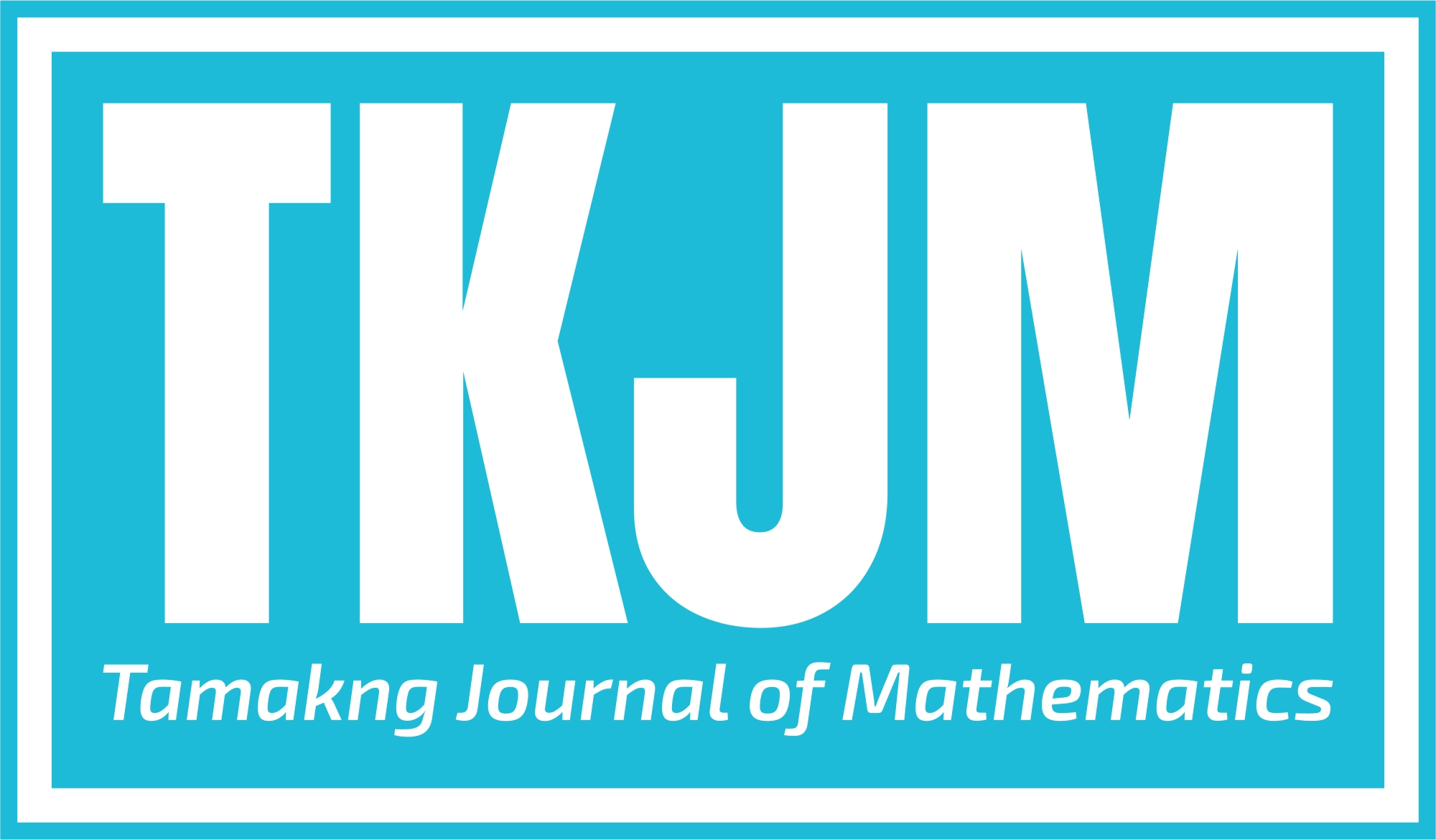The flow in periciliary layer in human lungs with Navier-Stokes-Brinkman equations
Main Article Content
Abstract
However, the human body has an innate immune system that helps to trap the debris by secreting mucus to catch the foreign particles, which are removed from the body by the movement of tiny hairs lining on the surface of the epithelial cells in the immune system.
The layer containing the tiny hairs or cilia is called Periciliary Layer (PCL). In this research, we find the velocity of the fluid in the PCL moved by a ciliary beating by using the Navier-Stokes-Brinkman equations.
We apply the Galerkin finite element method to determine numerical solutions. For the steady linear case of the equation, the numerical result is in good agreement with an exact solution.
Including the time derivative and nonlinear terms, we show that the velocity of the liquid is affected by the velocity of the solid, which follows the physical meaning of the fluid flow.
The result can be applied as a bottom boundary condition of the mucous layer to be able to find the velocity of mucus in the human lungs.
Article Details

This work is licensed under a Creative Commons Attribution-NonCommercial-ShareAlike 4.0 International License.
References
B. Verleye, M. Klitz, R. Croce, M. Griebel, S.V. Lomov, D. Roose, and I. Verpoest, Predicting the Termeability of Textile Reinforcements Via a Hybrid Navier-Stokes/Brinkman Solver, Proceedings of the 8th international conference on flow processes in composite materials, (2006), 65–72.
B. K. Jha and M. L. Kaurangini, Approximate Analytical Solutions for the Nonlinear Brinkman-Forchheimer- Extended Darcy Flow Model, Applied Mathematics, 2 (2011), 1432–1436.
G. N. Gatica, L. F. Gatica and F. A. Sequeira, Analysis of an Augmented Pseudostress-Based Mixed Formulation for a Nonlinear Brinkman Model of Porous Media Flow, Computer Methods in Applied Mechanics and Engineering, 289 (2015), 104–130.
H. Matsui, S. H. Randell, S. W. Peretti, C. W. Davis and R. C. Boucher, Coordinated Clearance of Periciliary Liquid and Mucus from Airway Surfaces, The Journal of clinical investigation, 102 (1998), 1125–1131.
H. B. Young and W. Kwan, The Finite Element Method Using MATLAB,,CRCPress,(1997).
J. Koplik, H. Levine and A. Zee, Viscosity Renormalization in the Brinkman Equation, The Physics of fluids, 26 (1983), 2864–2870.
J. R. Cotton and J. W. Grant, A Finite Element Method for Mechanical Response of Hair Cell Ciliary Bundlez, Journal of biomechanical engineering, 122 (2000), 44–50.
K. Chamsri, Formulation of a Well-Posed Stokes-Brinkman Problem with a Permeability Tensor, Journal of Mathematics, 1 (2015), 1–7.
K. Chamsri, Modeling the Flow of PCL Fluid due to the Movement of Lung Cilia, Ph.D thesis, University of Colorado Denver, 2012.
K. Chamsri, N-Dimensional Stokes-Brinkman Equations using a Mixed Finite Element Method, Australian Journal of Basic and Applied Sciences, 8(11) Special (2014), 30–36.
K. Chamsri and L. S. Benethum, Permeability of Fluid Flow Through a Preiodic Array of Cylinders, Applied Mathematical Modelling, 39(1) (2015), 244–254.
K. Wuttanachamsri and L. Schreyer, Effects of Cilia Movement on Fluid Velocity: II Numerical Solutions over a Fixed Domain, Transport in Porous Media, 134 (2020), 471–489.
L. Guta and S. Sundar, Navier-Stokes-Brinkman System for Interaction of Viscous Waves with a Submerged Porous Structure, Tamkang journal of mathematics, 41 (2010), 217–243.
L. S. Benethum and J. H. Cushman, Multiphase, Hybrid Mixture Theory for Swelling Systems-I: Balance Laws, International Journal of Engineering Science, 34 (1996), 125–145.
O. Iliev, Z. Lakdawala and V. Starikovicius, On a Numerical Subgrid Upscaling Algorithm for Stokes–Brinkman Equations, Computers & Mathematics with Applications, 65 (2013), 435–448.
P. Kurbatova, N. Bessonov, V. Volpert, H. Tiddens, C. Cornu, P. Nony and D. Caudri, Model of Mucociliary Clearance in Cystic Fibrosis Lungs, Journal of theoretical biology, 372 (2015), 81–88.
P.G. Jayathilake, Z. Tan, D. V. Le, H. P. Lee and B. C. Khoo, Three-Dimensional Numerical Simulations of Human Pulmonary Cilia in The Periciliary Liquid Layer by the Immersed Boundary Method, Computers & Fluids, 67 (2012), 130–137.
P. N. Kaloni and J. Guo, Steady Nonlinear Double-Diffusive Convection in a Porous Medium Based Upon the Brinkman–Forchheimer Model, Journal of Mathematical Analysis and Applications, 204 (1996), 138–155.
P. R. Sears, K. Thompon, M. R. Knowles and C. W. Davis, Human Airway Ciliary Dynamics American Journal of Physiology : Lung Cellular and Molecular Physiology, 304(3) (2012), 170–183.
S. M. Mitran, Metachronal Wave Formation in a Model of Pulmonary Cilia, Computers & structures, 85 (2007), 763–774.
T. F. Weinstein and L. S. Benethum, On the Derivation of the Transport Equation for Swelling Porous Materials with Finite Deformation, International Journal of Engineering Science, 44 (2006), 1408–1422.
X. Xie, J. Xu and G. Xue, Uniformly-Stable Finite Element Methods for Darcy-Stokes- Brinkman Models, Journal of Computational Mathematics, 26 (2008), 437–455.
